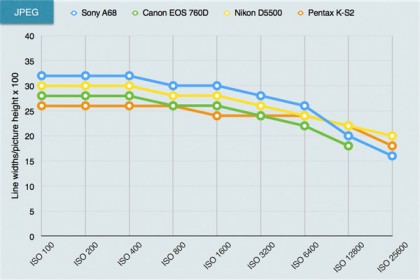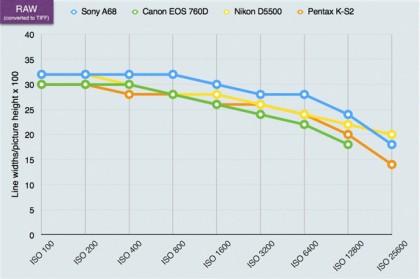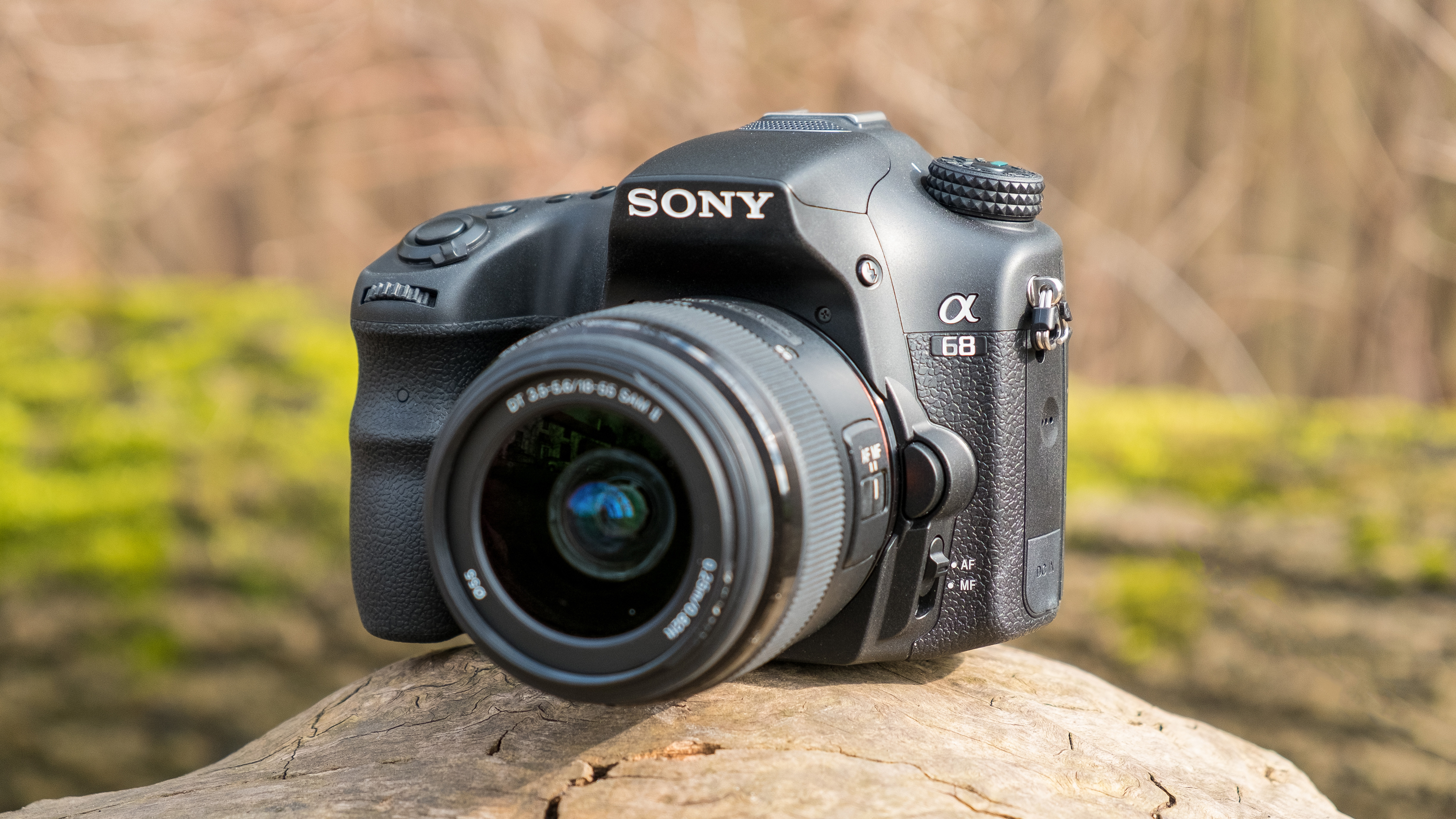Why you can trust TechRadar
We run cameras through a whole series of lab tests designed to check their performance in controlled conditions. We then compare these results agains those from the camera's chief rivals. The cameras we've chosen as rivals are:
Canon EOS 760D: This is the more advanced of Canon's two new mid-range/enthusiast DSLRs. Like the Sony A68, it has a 24-megapixel APS-C sensor, but a conventional DSLR design.
Nikon D5500: The D5500 is one step down from Nikon's top enthusiast DSLRs, so it's pitched at exacty the same kind of keen amateur as the A68.
Pentax K-S2: Never rule out Pentax in the DSLR market. The K-S2 is compact, rugged and powerful, and if you're already thinking outside the box with the A68, you should consider this too.
We test resolution using an industry-standard ISO test chart across a wide ISO range and checking both JPEG and raw files. Resolution is measured in line widths/picture height, a new standard which automatically allows for differences in sensor size. You'll find the A68's results, along with those of its rivals, in the charts below.

JPEG resolution analysis: Its mediocre kit lens aside, the A68 shows itself to be capable of capturing very sharp JPEG images, beating its rivals by a small but significant margin right up to ISO 6,400.

Raw (converted to TIFF) resolution analysis: This pattern is repeated with the Sony's raw files. Its rivals close the gap slightly, but the A68 still proves just that little bit sharper than the rest.
